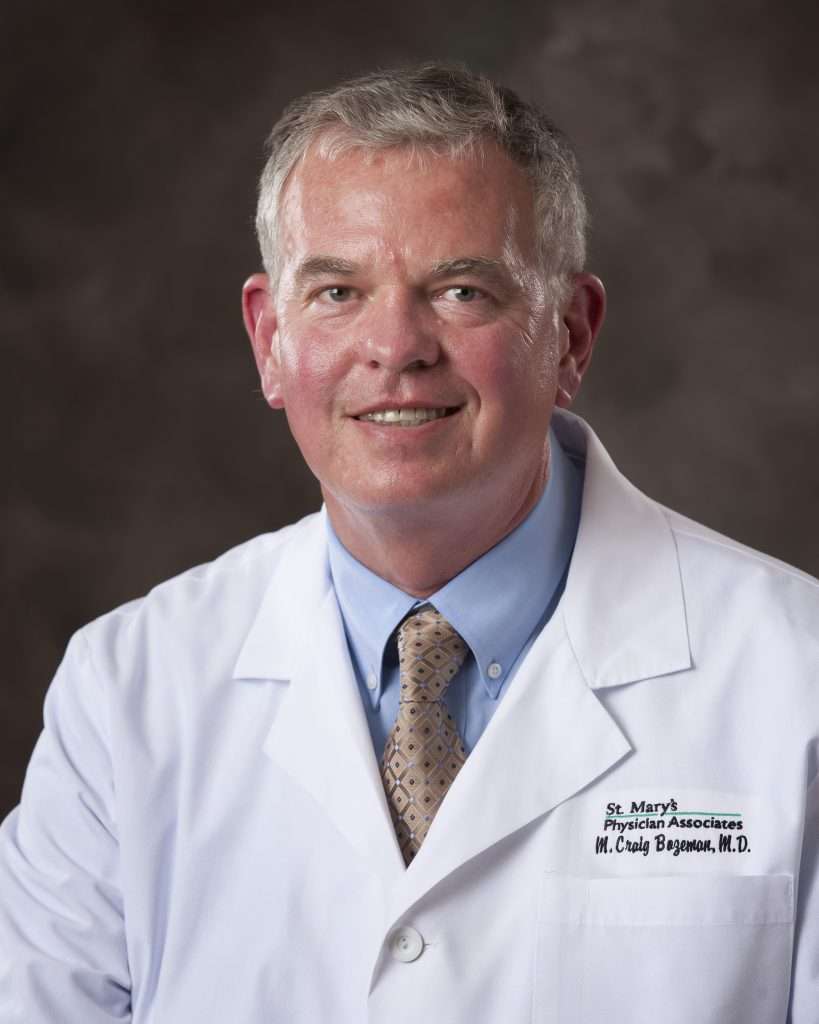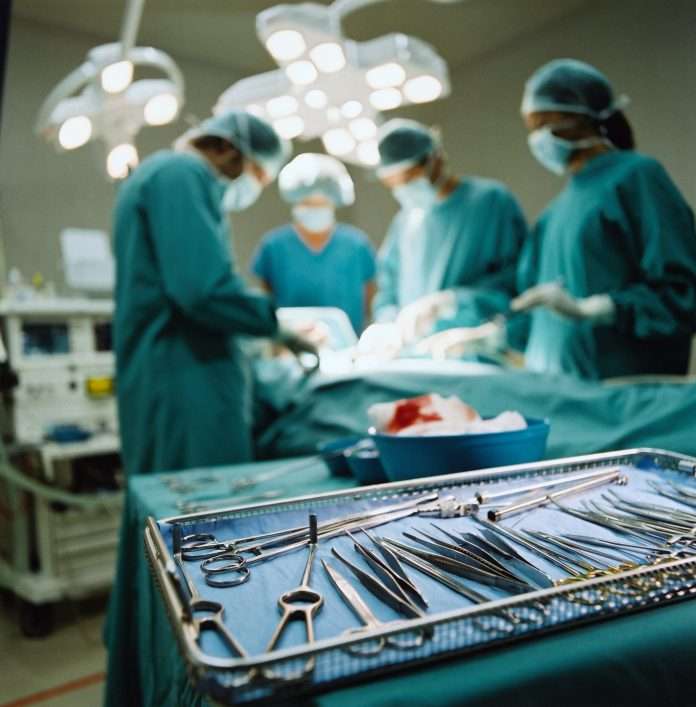When You Require Surgery, St. Mary’s Regional Medical Center Should Be Your Hospital of Choice
If you or someone in your family needs an inpatient or outpatient surgical procedure, the Surgery Department at St. Mary’s Regional Medical Center can help. The department is equipped with advanced technology and is committed to using techniques that help lower infection rates and encourage faster healing.
David W. Shepherd, MD, and Craig M. Bozeman, MD, general surgeons with St. Mary’s Physician Associates, talk about surgical options at the medical center.


What is general surgery?
General surgery involves all parts of the body, including the neck, abdomen, esophagus, liver and more. General surgeons are trained in a broad range of surgical procedures including emergency surgery, pediatric surgery, surgical oncology and more.
What is minimally invasive surgery?
Minimally invasive surgery involves a variety of techniques to operate with less damage to the body than with open surgery. In general, minimally invasive surgery is associated with less pain, a shorter hospital stay and fewer complications. Other advantages of minimally invasive surgery can include greater surgical precision, less trauma, less blood loss and reduced risk of infection.
What is a laparoscopic procedure?
Laparoscopy is surgery done through one or more small incisions, using small tubes and tiny cameras and surgical instruments and was one of the first types of minimally invasive surgery. It is a common type of surgery that is used to check for problems in the abdomen or a woman’s reproductive system.

What is robotic surgery?
Another type of minimally invasive surgery is robotic surgery, also called robot-assisted surgery. It provides a magnified, 3D view of the surgical site and allows surgeons to perform complex procedures with more precision, flexibility and control than is possible with conventional techniques. Robotic surgery is usually associated with minimally invasive surgery — procedures performed through tiny incisions.
What are some of the common surgical procedures you perform at St. Mary’s Regional Medical Center?
- Appendectomy: The appendix is removed when it becomes swollen or infected, which is called appendicitis. An infected appendix can burst and leak bacteria into the abdomen. Common symptoms include abdominal pain, fever, nausea, vomiting and diarrhea.
- Colon and rectal surgery: Common conditions treated include hemorrhoids, fissures, abscesses and infections. Patients can also be treated for many inflammatory bowel conditions, such as ulcerative colitis, Crohn’s disease, diverticulitis and cancer.
- Gallbladder removal: A thin tube called a laparoscope and other instruments are used to see inside the abdomen and remove the gallbladder. You may need to have your gallbladder removed if you have gallstones or other forms of gallbladder disease.
- Gynecologic surgery: These include hysterectomy, or the removal of a woman’s uterus, and tubal ligation, a procedure in which a woman’s fallopian tubes are surgically closed to prevent conception and pregnancy.
- Hernia repair: A hernia occurs when internal organ or tissue bulges through a weak area in the belly wall or groin. A combination of muscle weakness and straining, such as heavy lifting, may cause hernias. Surgeons at St. Mary’s can use the da Vinci® Surgical System to correct hernias.
What happens before surgery?
At St. Mary’s, you will be scheduled to speak with or see the pre-operative nurse before the scheduled surgery date. The pre-op nurse will review your medical information including medications. It is essential that the surgeon and anesthesiologist know the medications you are taking, including over-the-counter supplements. Please bring a list of your medications or your medication bottles to your pre-op appointment. After reviewing your medical information, the pre-op nurse will provide important information regarding your surgery.
What happens the day of surgery?
You will be asked to arrive two to three hours before your scheduled surgery time. During this time period, an IV will be started and the necessary preparation for surgery will be completed. The anesthesiologist and surgeon will also visit with you. Once surgery begins, family members will be able to track the surgery’s progress in the waiting room. The nurse will also provide updates. When the surgery has been completed, the surgeon will speak to your family in one of our consultation rooms. After the surgeon has talked to the family, they may meet the patient in the assigned post-op room.
To make an appointment with Dr. Shepherd or Dr. Bozeman at St. Mary’s Regional Medical Center, call 580-249-3898.

Individual results may vary. There are risks associated with any surgical procedure. Talk with your doctor about these risks to find out if minimally invasive or robotic surgery is right for you.
Physicians are on the medical staff of St. Mary’s Regional Medical Center, but, with limited exceptions, are independent practitioners who are not employees or agents of St. Mary’s Regional Medical Center. The hospital shall not be liable for actions or treatments provided by physicians. For language assistance, disability accommodations and the nondiscrimination notice, visit our website.






